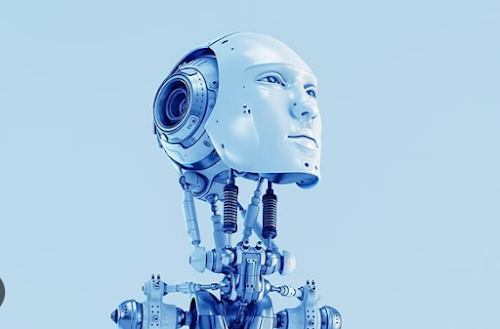Artificial Intelligence (AI)
Definition: Artificial Intelligence (AI)
Artificial intelligence is a field of science concerned with building computers and machines that can reason, learn, and act in such a way that would normally require human intelligence or that involves data whose scale exceeds what humans can analyze.
AI is a broad field that encompasses many different disciplines, including computer science, data analytics and statistics, hardware and software engineering, linguistics, neuroscience, and even philosophy and psychology. On an operational level for business use, AI is a set of technologies that are based primarily on machine learning and deep learning, used for data analytics, predictions and forecasting, object categorization, natural language processing, recommendations, intelligent data retrieval, and more.
Artificial Intelligence (AI) is a branch of computer science that focuses on creating machines or software that can think, learn, and solve problems, similar to how humans do. AI is designed to simulate human intelligence in machines, enabling them to perform tasks that normally require human brainpower.
How Does AI Work?
While the specifics vary across different AI techniques, the core principle revolves around data. AI systems learn and improve through exposure to vast amounts of data, identifying patterns and relationships that humans may miss. This learning process often involves algorithms, which are sets of rules or instructions that guide the AI's analysis and decision-making. In machine learning, a popular subset of AI, algorithms are trained on labeled or unlabeled data to make predictions or categorize information. Deep learning, a further specialization, utilizes artificial neural networks with multiple layers to process information, mimicking the structure and function of the human brain. Through continuous learning and adaptation, AI systems become increasingly adept at performing specific tasks, from recognizing images to translating languages and beyond.
What Can AI Do?
Thanks to generative AI, you have the power to create art, music, and videos effortlessly. You can even design a personalized avatar for your social media profiles and so much more. If you ever need help getting organized, AI can lend a hand with that, too! Let’s explore all the fantastic ways AI can save time, spark creativity, and streamline workflow.
AI can:
- Recognize speech (like Siri or Google Assistant),
- Understand language (ChatGPT is an example!)
- See and recognize images (face recognition),
- Play games and beat humans (like chess or Go),
- Drive cars (self-driving vehicles).
- Recommend videos, products, or music (YouTube, Amazon, Spotify)
Types of Artificial Intelligence
Narrow AI (Weak AI)
General AI (Strong AI)
Superintelligent AI
From Data to Decisions:
A Guide to the Core AI Technologies
Key Technologies Behind AI Machine Learning (ML):
- AI that learns from data without being directly programmed.
- Neural Networks – Systems inspired by the human brain, especially used in deep learning.
- Natural Language Processing (NLP) – Helps machines understand human language.
- Robotics – AI used to control physical robots.
Where Is AI Used?
Use of AI in the Following Things/Fields/Areas:
- Virtual Assistant or Chatbots
- Agriculture and Farming
- Autonomous Flying
- Retail, Shopping, and Fashion
- Security and Surveillance,
- Sports Analytics and Activities
- Manufacturing and Production
- Livestock and Inventory Management,
- Self-driving Cars or Autonomous Vehicles,
- Healthcare and Medical Imaging Analysis,
- Warehousing and Logistics Supply Chain
Challenges and Concerns:
- Job displacement – Some jobs may be replaced by AI.
- Bias in AI – AI can learn human biases from data.
- Privacy – Using personal data for AI systems.
- Ethical questions – Who is responsible when AI makes decisions?
Artificial Intelligence (AI) in Agriculture
Artificial Intelligence (AI) is changing the face of agriculture by helping farmers make smarter decisions, improve crop yields, reduce waste, and save time and money. AI-powered tools use data and smart algorithms to assist in everything from planting to harvesting.
How AI Is Used in Agriculture
1. Crop Monitoring and Disease Detection
- AI systems use drones and satellite images to scan fields and detect issues like pests, disease, or water stress early.
- Machine learning models can analyze images and spot problems before the human eye can.
2. Soil and Weather Analysis
- AI predicts weather conditions, soil quality, and optimal planting times to help farmers plan better.
- Sensors in the soil collect data, which AI uses to recommend the best fertilizers or irrigation schedules.
3. Precision Farming
- AI enables precision agriculture, where only specific areas of the farm are treated with fertilizers, pesticides, or water, based on real-time data.
- This reduces cost and environmental impact.
4. Automated Machines and Robotics
- Self-driving tractors, robotic weeders, and harvesting machines use AI to perform tasks with high accuracy.
- These machines can work 24/7 and help address labor shortages.
5. Yield Prediction
- AI tools can analyze factors like climate, soil health, and crop history to predict harvest outcomes.
- This helps with planning, storage, and pricing.
- Benefits of AI in Agriculture: Increases crop productivity.
- Reduces the use of water, fertilizers, and pesticides.
- Helps detect diseases and pests early. Cuts labor costs through automation.
- Supports sustainable and eco-friendly farming.








